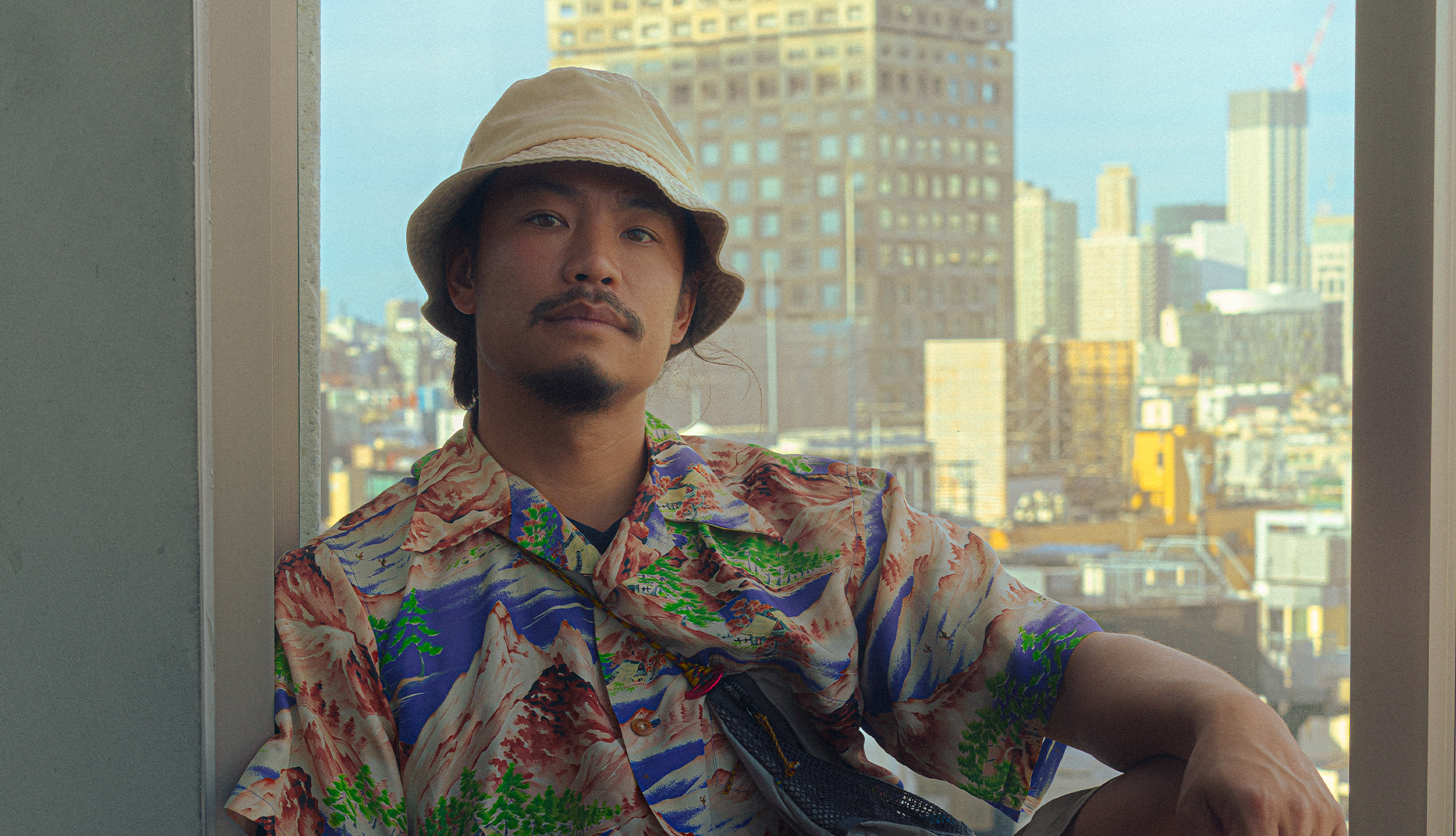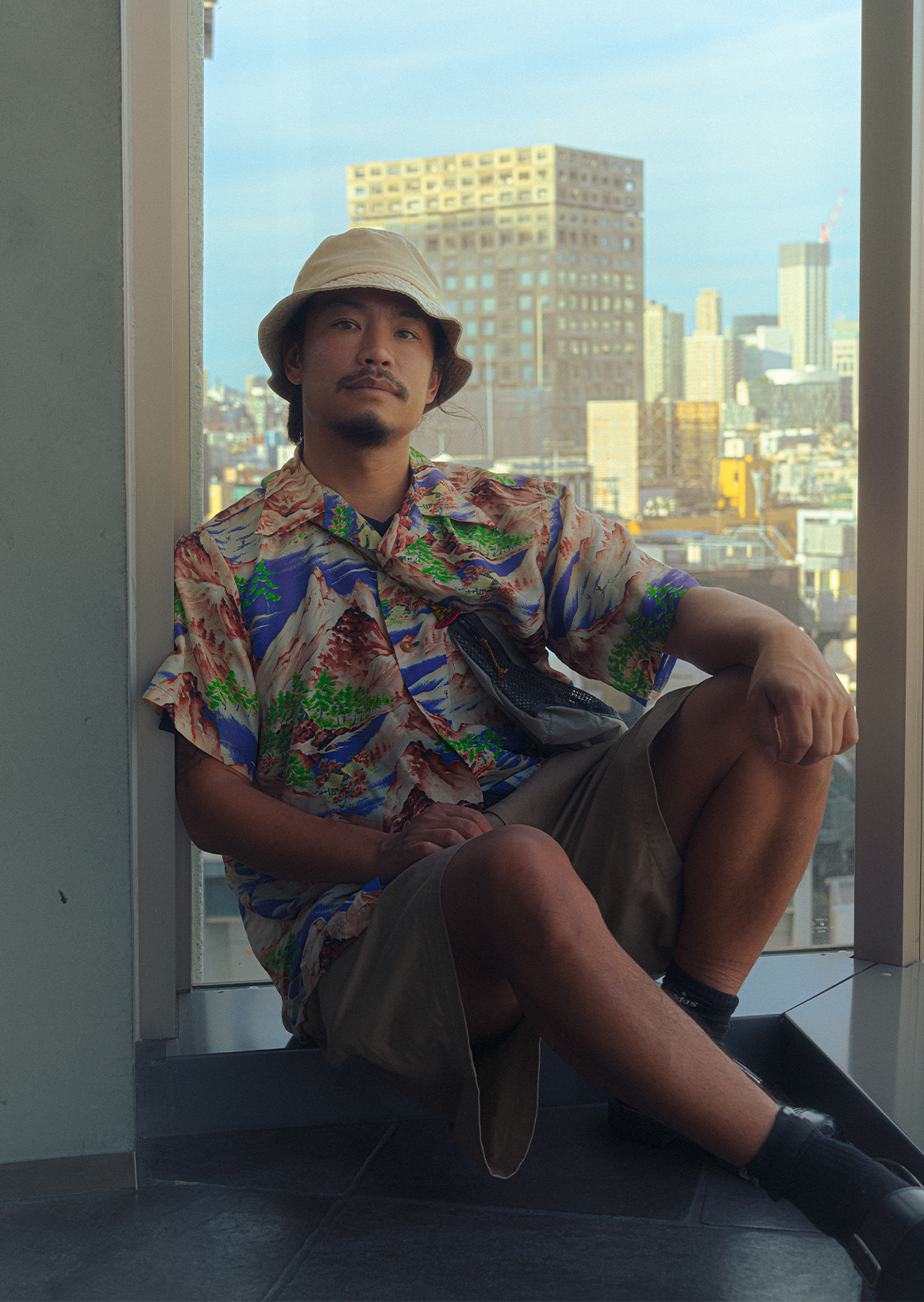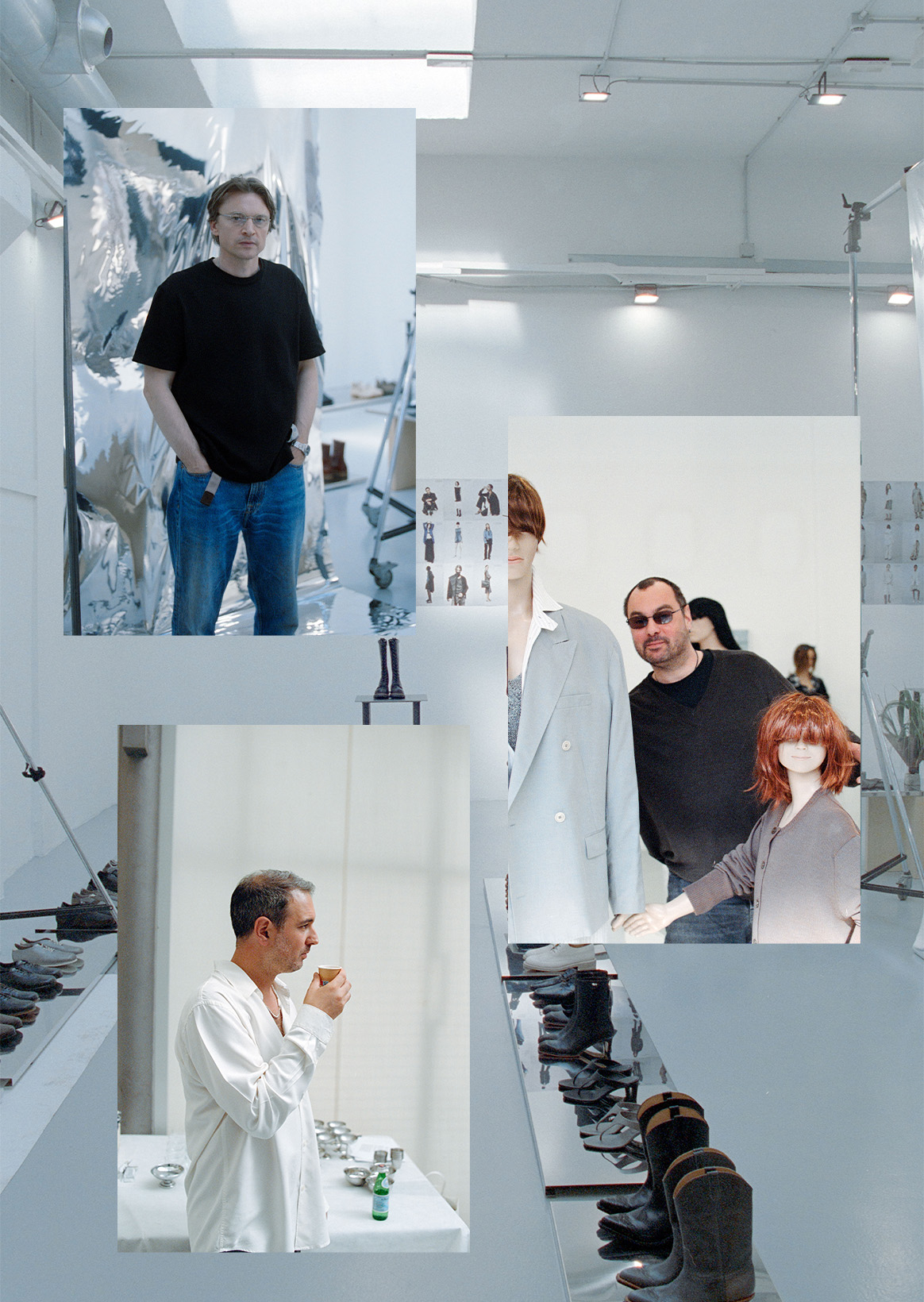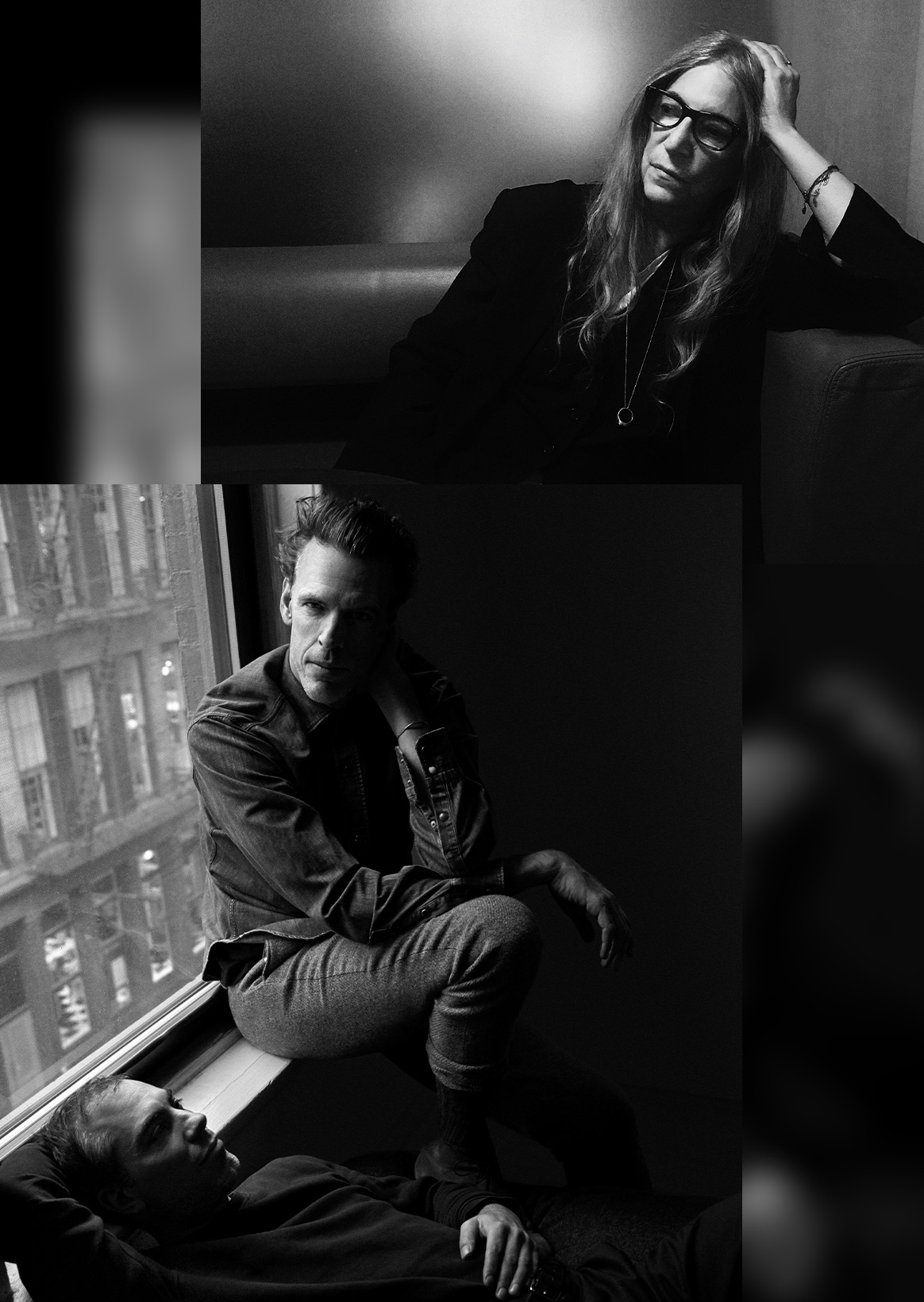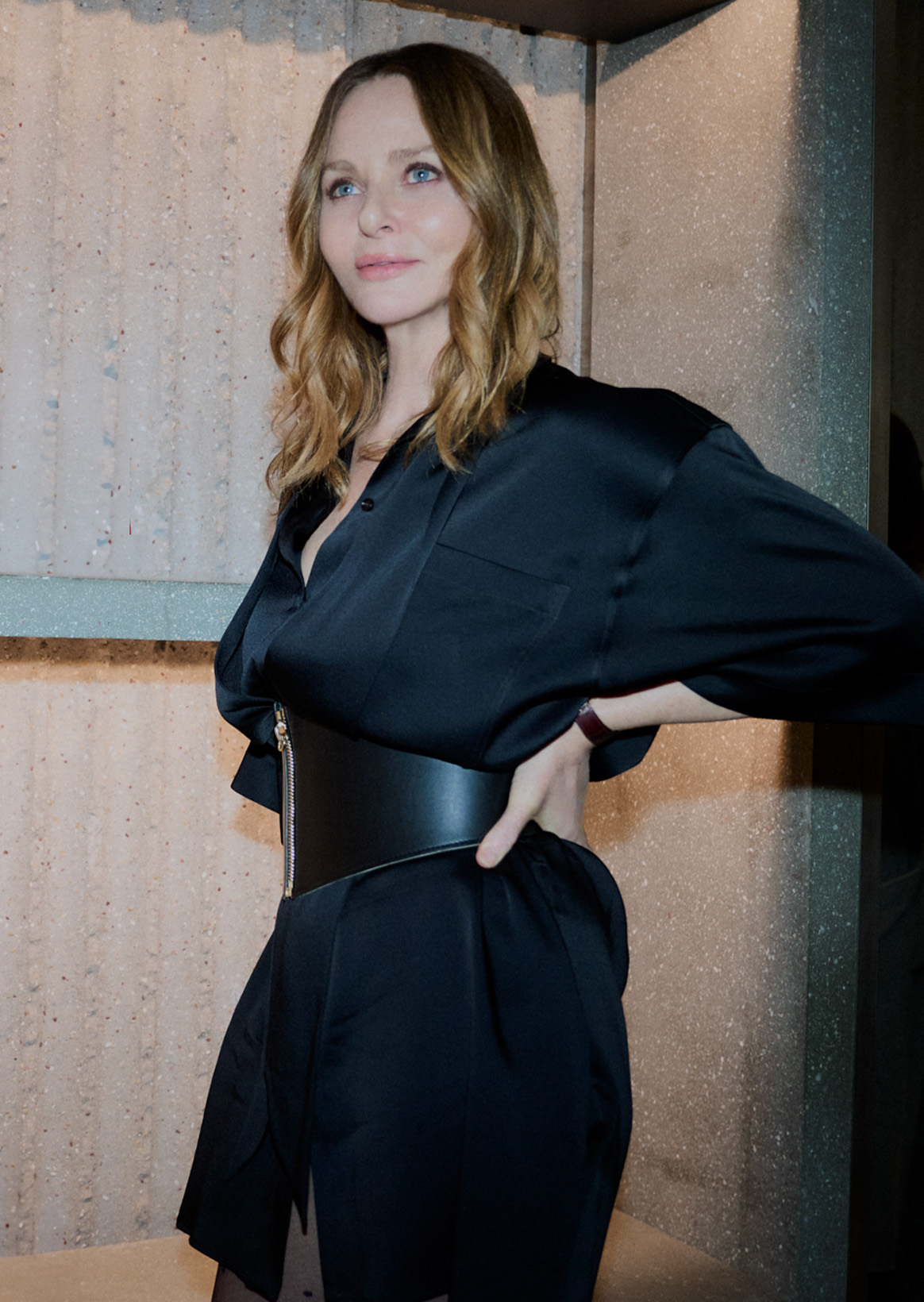Based in Los Angeles, Brain Dead is a driving force behind the global culture movement while crossing fashion, art, film, and spatial production. One of these bases is "BRAIN DEAD STUDIOS SHIBUYA" located on the 5th floor of Shibuya PARCO.
Director Kyle Ng (Kyle Un) has been creating a "playground" where you can experience different cultures continuously while mixing all genres into chaotic. The “chaos” he described was not just a chaos, but a situation in which all styles coexist, intersect, and unpredictably change.
From his intimate feelings for Tokyo to his intimate curiosity about culture, to Brain Dead’s “next playground,” he delved into the source of ideas and passion that Kyle’s creations.
※The English version is next page.
- Photo
- Kei Murata
- Text
- Chikei Hara
- Edit
- RCKT/Rocket Company*
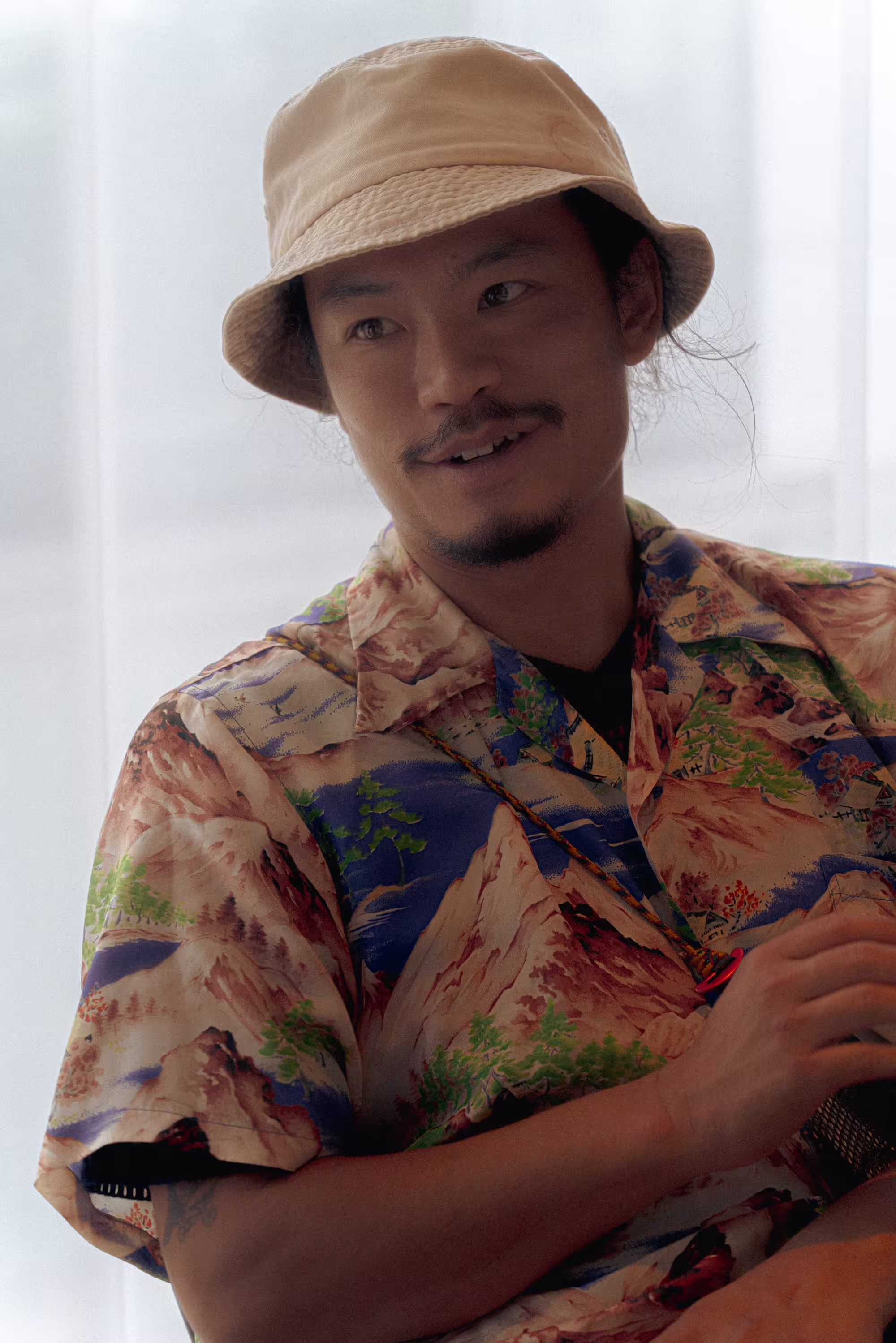
――Brain Dead is known as a creative label that works across genres through collaboration with artists and creators from all over the world. What is the core of the activity and the source of inspiration?
Since I was a child, I have always loved punk, hardcore, and noise music, so I have been strongly attracted to the culture of musicians and artists as styles such as "what kind of clothes they wear" or "what kind of attitude they live in". I've seen it as much more exciting than just fashion, so I naturally came to face the question of how to incorporate that culture into my own clothes. That's why when I decided to make a graphic T-shirt with Ed Davids (co-founder and graphic designer), I didn't feel like making a streetwear at all. What we were interested in was the idea of building the culture itself. I didn't have the simple idea of selling what I liked as a commodity at all.
Now, 10 years later, like us, many people have made graphic T-shirts to express their loved culture. As a neutral way and attitude, I think that our activities are being received while fitting into the present era. So now Brain Dead is focused on building communities and providing a playground where people can find what they like.
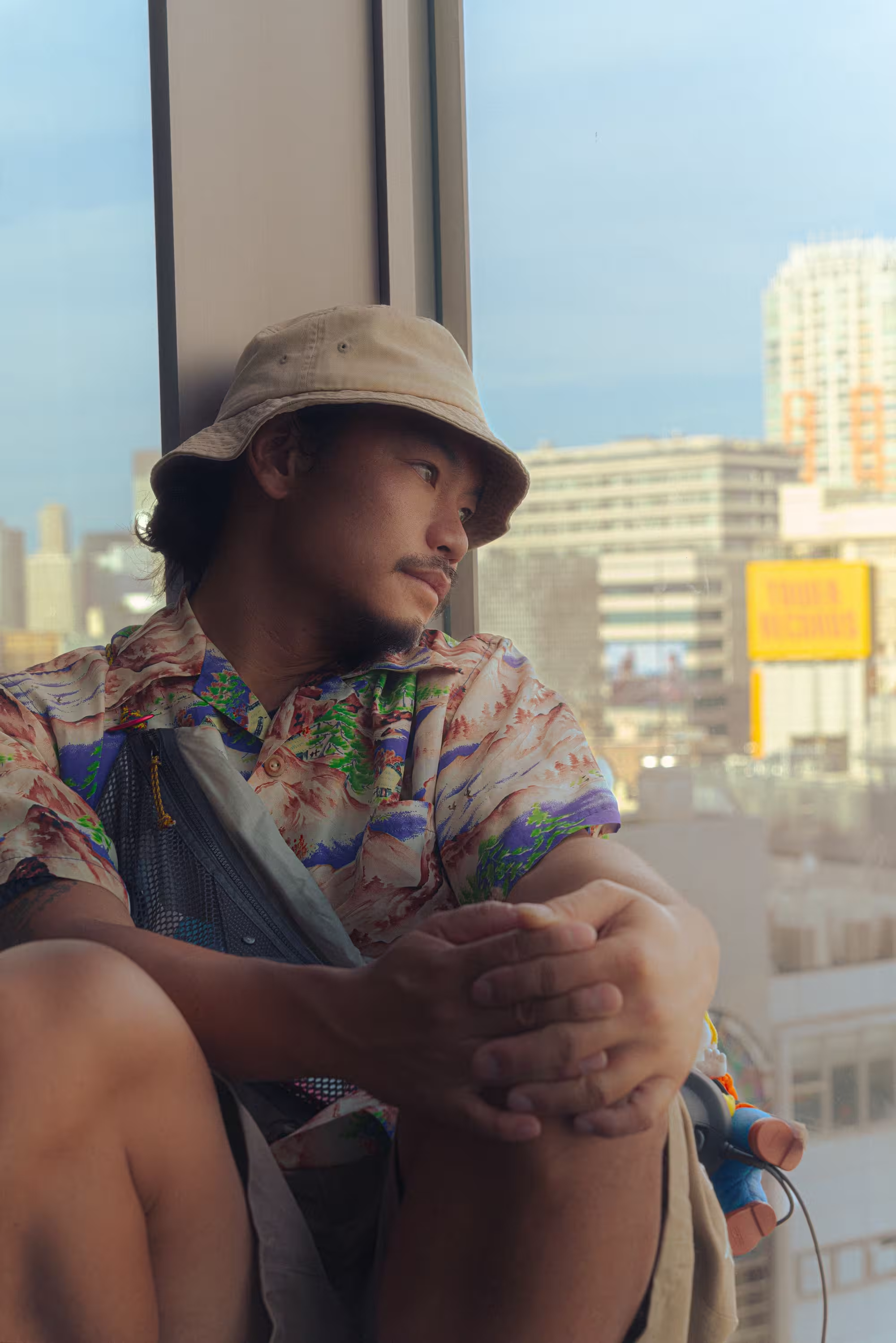
――Compared to other brands, Brain Dead stands out for the personality of collaborators, attitude toward creation, and the quality of products. I feel that there is a fundamental respect for artists and the culture they belong to, but what does Kyle value in collaboration?
I'm really passionate about a lot of things, and I like to explore it. I'm still obsessed with learning about the world, and it's fun to realize that I don't know anything. When you meet an excellent person or touch a work that is strongly inspired, your imagination is naturally stimulated by saying, "I want to support this person" and "I want to show this work to more people." Or, I think that the idea of combining creativity, including putting the work in another context and retranslating it as a new value, is one of the reasons why Brain Dead is funny.
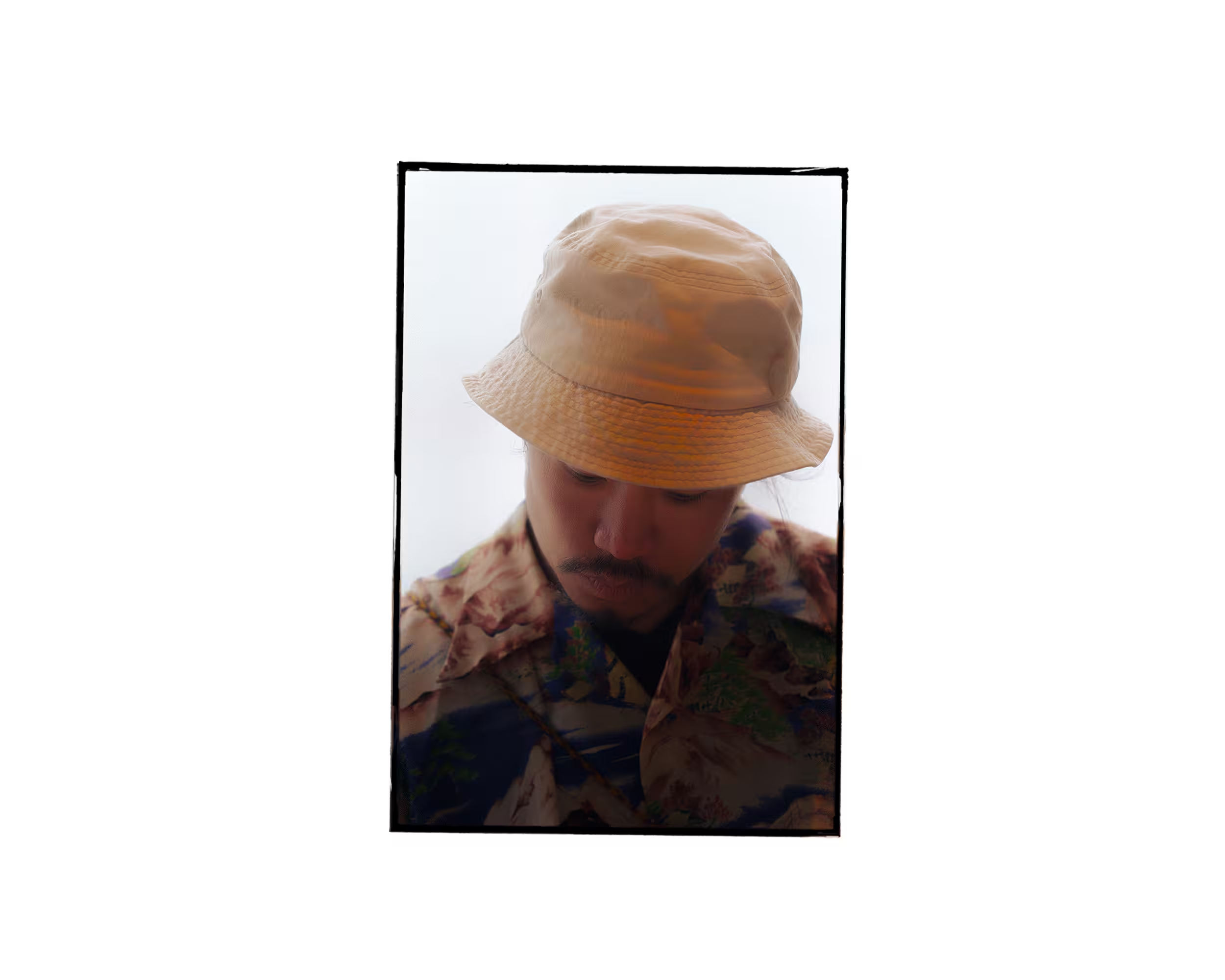
The collaboration with the card game "Magic: The Gathering" is exactly the same. I really love that worldview, but I felt that gaming culture and card culture were not described as “cool” in the context of fashion. I thought it was great to have the potential to create a new way of aesthetics and expression among those who love it, and I wanted it to be properly evaluated. The game is a very important entrance that fosters human curiosity and obsessed power. I believe that talking about the game or being passionate about the video game itself is one of the fine expressions. In addition, each card game has its own unique culture, and it has its own visual identity. Because so many people don't try to treat the messages and worldviews that come from card games as art, I collaborated to convey their essence.
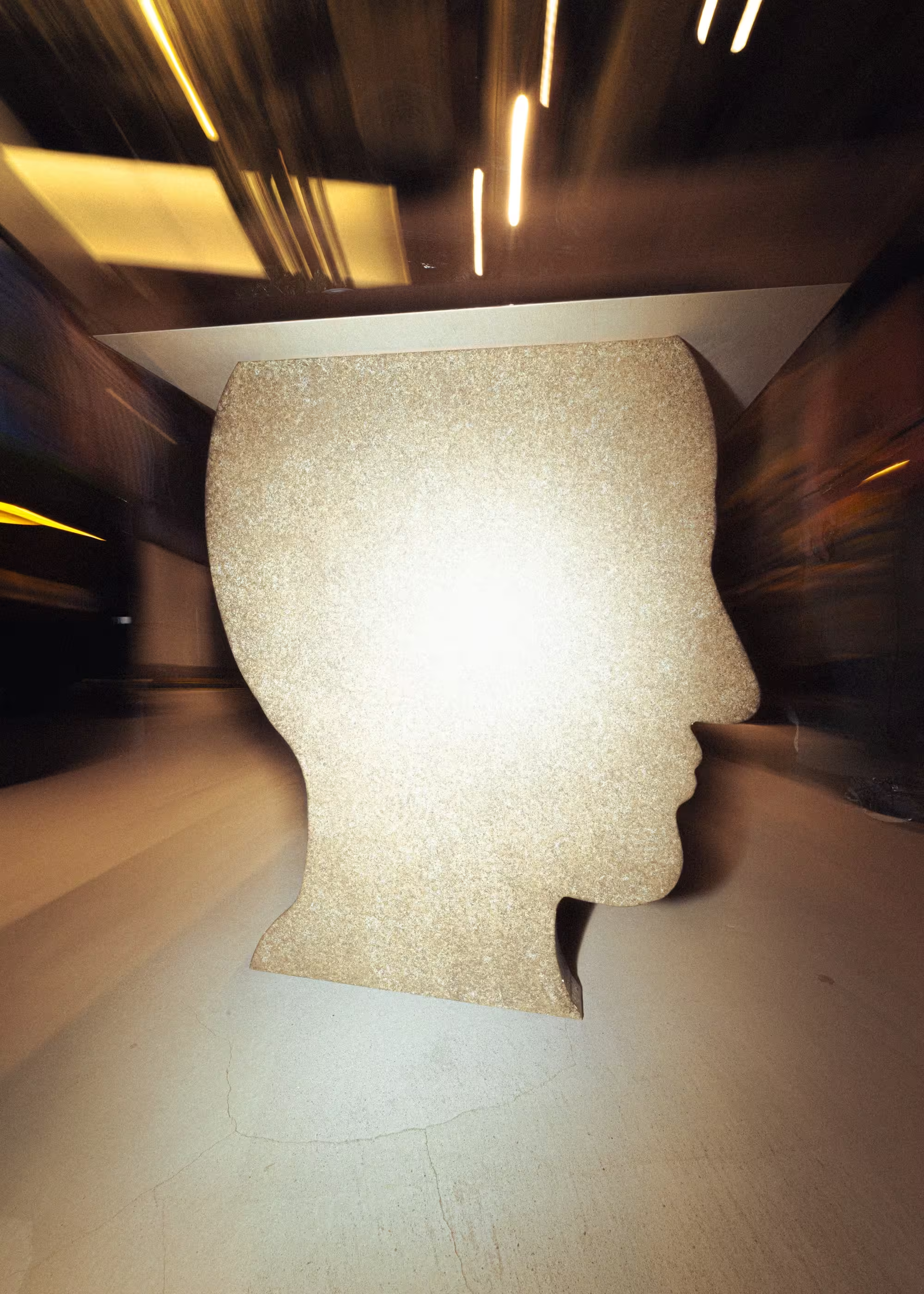
――Did Kyle come to research and awareness of various cultures because he had some exciting experience?
The area where I grew up was surrounded by a variety of cultures, and I feel that it was a very blessed environment. I had a lot of friends who played punk rock, where Will Wright, the creator of the simulation game Simmiti, lived and her daughter was a bit punk, her friends were on a robot fight show called BattleBots, Industrial Light & Magic (ILM) who worked on VFX for the movie Star Wars, and stop motion master Phil Tippett were all like an uncle in the neighborhood, and there were many creative people around me. A lot of creative activities were organically linked. I was playing with these guys, so everyone was crazy about robots, movies, animations, and nards. I realized later that creativity comes from a familiar place.
The so-called “creative” tends to be appreciated for success or something that has been completed, but the people in the area where I grew up were just people who moved just by “what I like” and “creating it because I want to make it”. I think this environment is the driving force for me now. So I think chaos and geek things are really funny. At first glance it seems to be different, but there are people who are all connected somewhere and are deeply connected to each other. It's a very niche, but I think it's also a well-loved person, and I think it has the potential to be something special for someone.
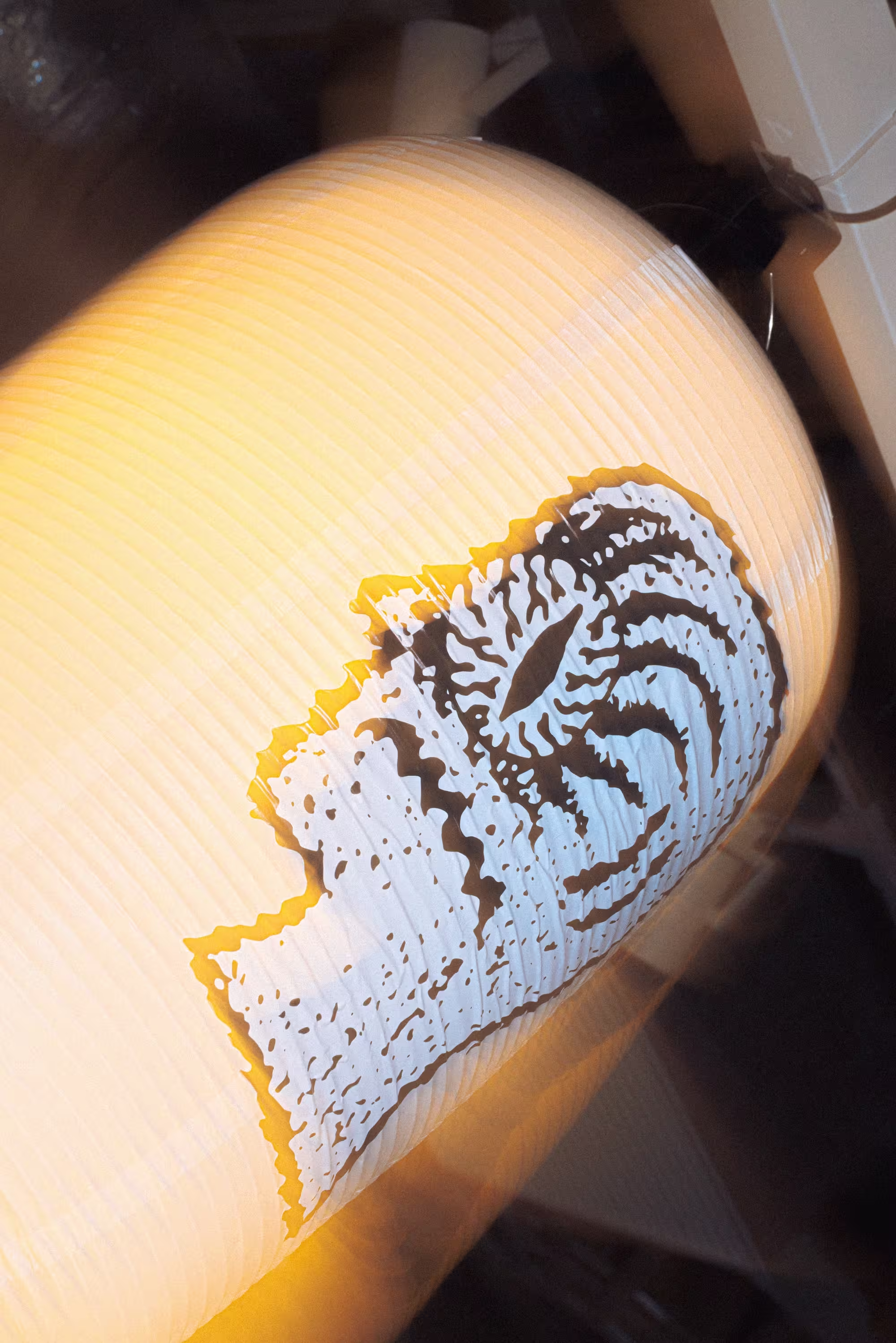
――The "BRAIN DEAD STUDIOS SHIBUYA" store is unique because of the elements of sushi and Tokyo culture. Where's that idea?
It's simple, but I like food samples very much (laughs). There was also a local sushi shop in Berkeley, and since it was my neighborhood, I went there from a small age. I really liked watching sushi rolls around the lane and looking at samples lined up in the showcase. The strangeness and entertainment of that visual have always been remembered.
I also like Shibuya PARCO very much, and when I try to explain to my American friends, "PARCO is such a place," I often say, "That's not here!" From high fashion to street culture, art and music, it is packed with things from various layers, and it is truly unique that it lives together naturally. Moreover, I think it's interesting to see such a lot of things look very cool.
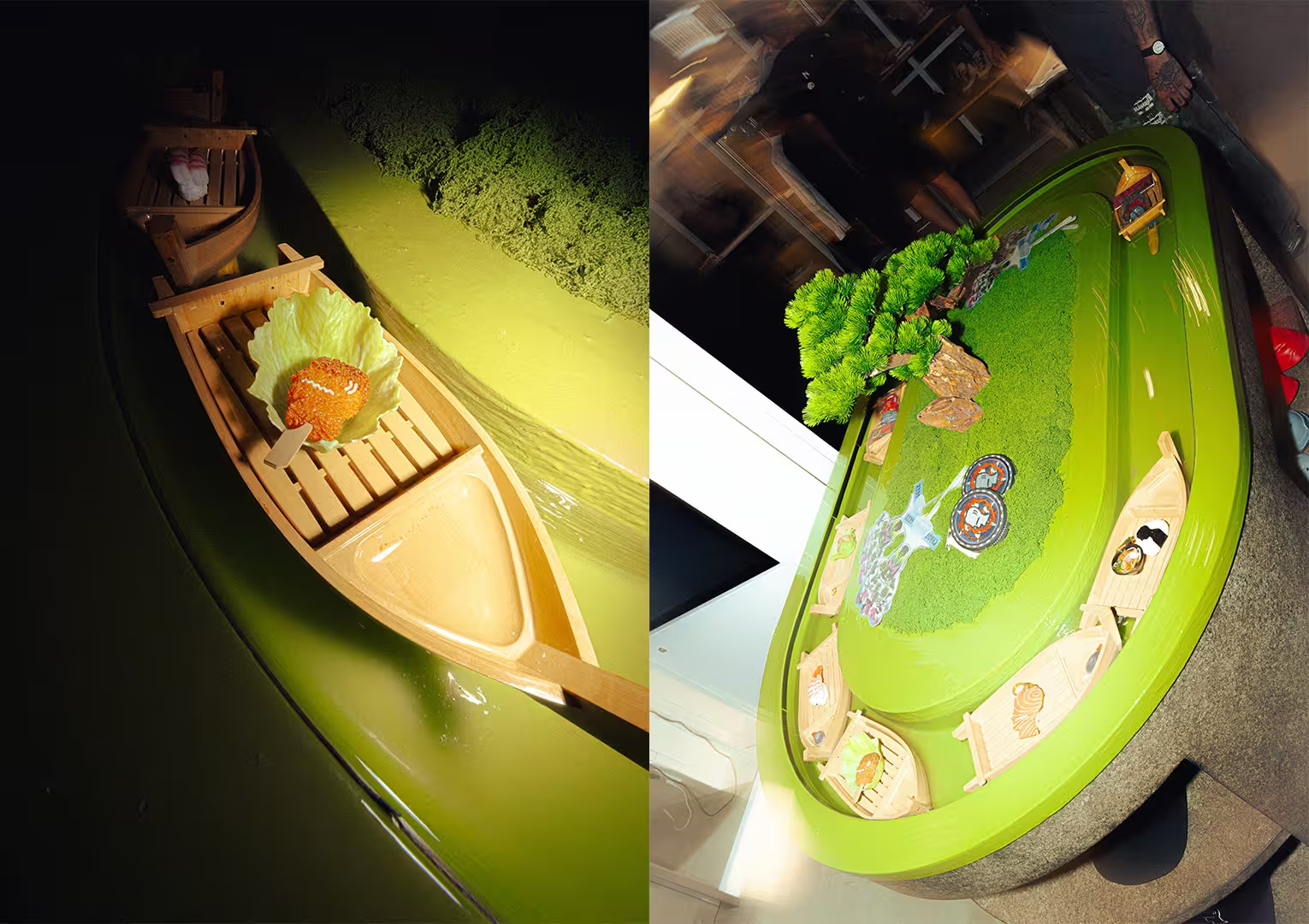
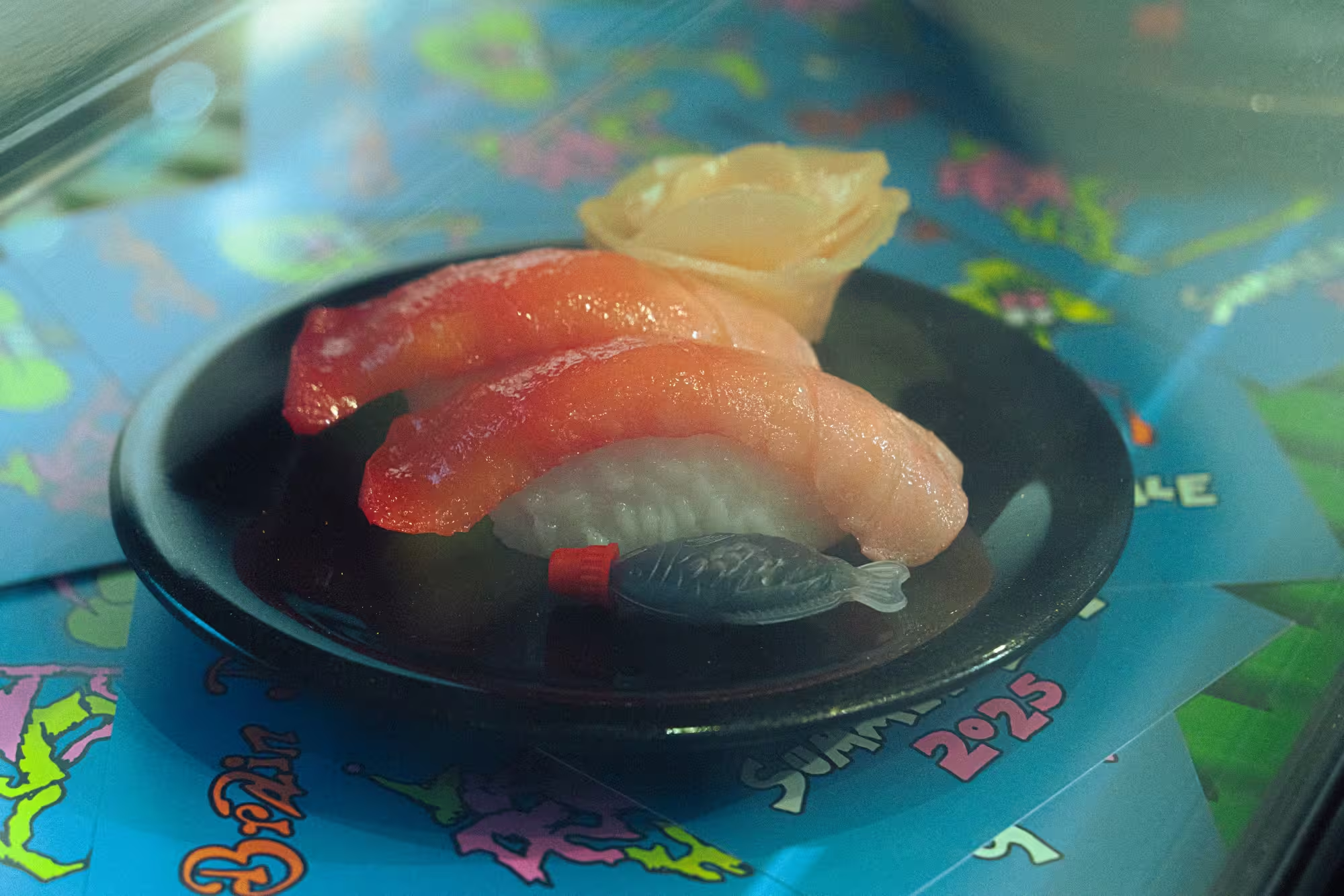 There are many unique fixtures in the store, such as a rotating table where food samples flow on a boat, and a counter where sushi samples are lined up is a cash register.
There are many unique fixtures in the store, such as a rotating table where food samples flow on a boat, and a counter where sushi samples are lined up is a cash register.
――What do you think is the reason why you are attracted to the culture of Tokyo?
In fact, my stepfather and stepmother are both Japanese, and I have been growing up in Japanese culture for a long time. When I first came to Tokyo, I was honestly overwhelmed. Anyway, the amount of information is so great, the power of culture is so strong, and I still remember the feeling of being able to beat the intense stimuli in front of me. I was surprised because it was something I had loved all the time, but I felt some comfort. Maybe that’s why I’m calming down here naturally. I've been to Tokyo many times in about 10 years, and it's already a place like a "second home" (laughs).
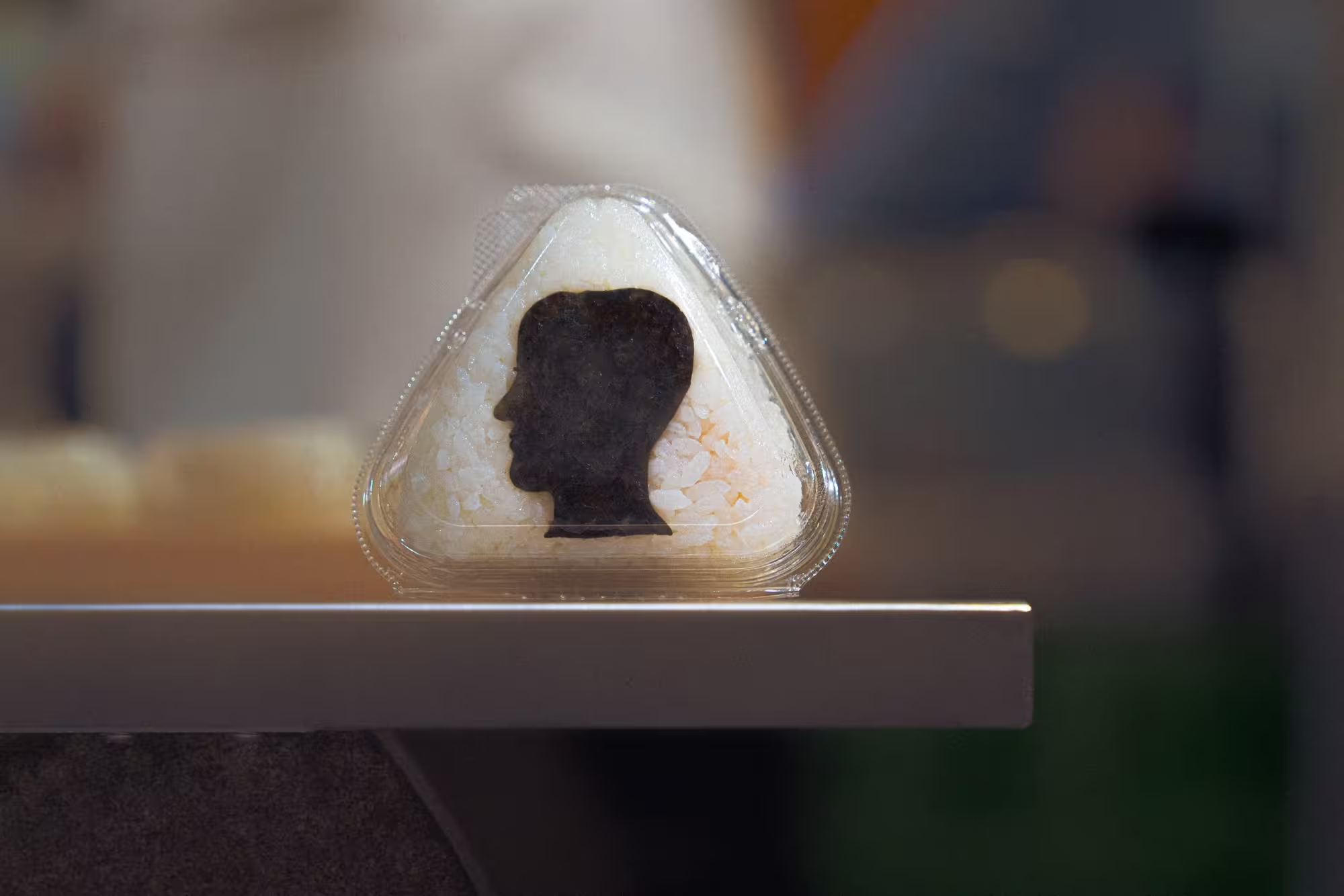
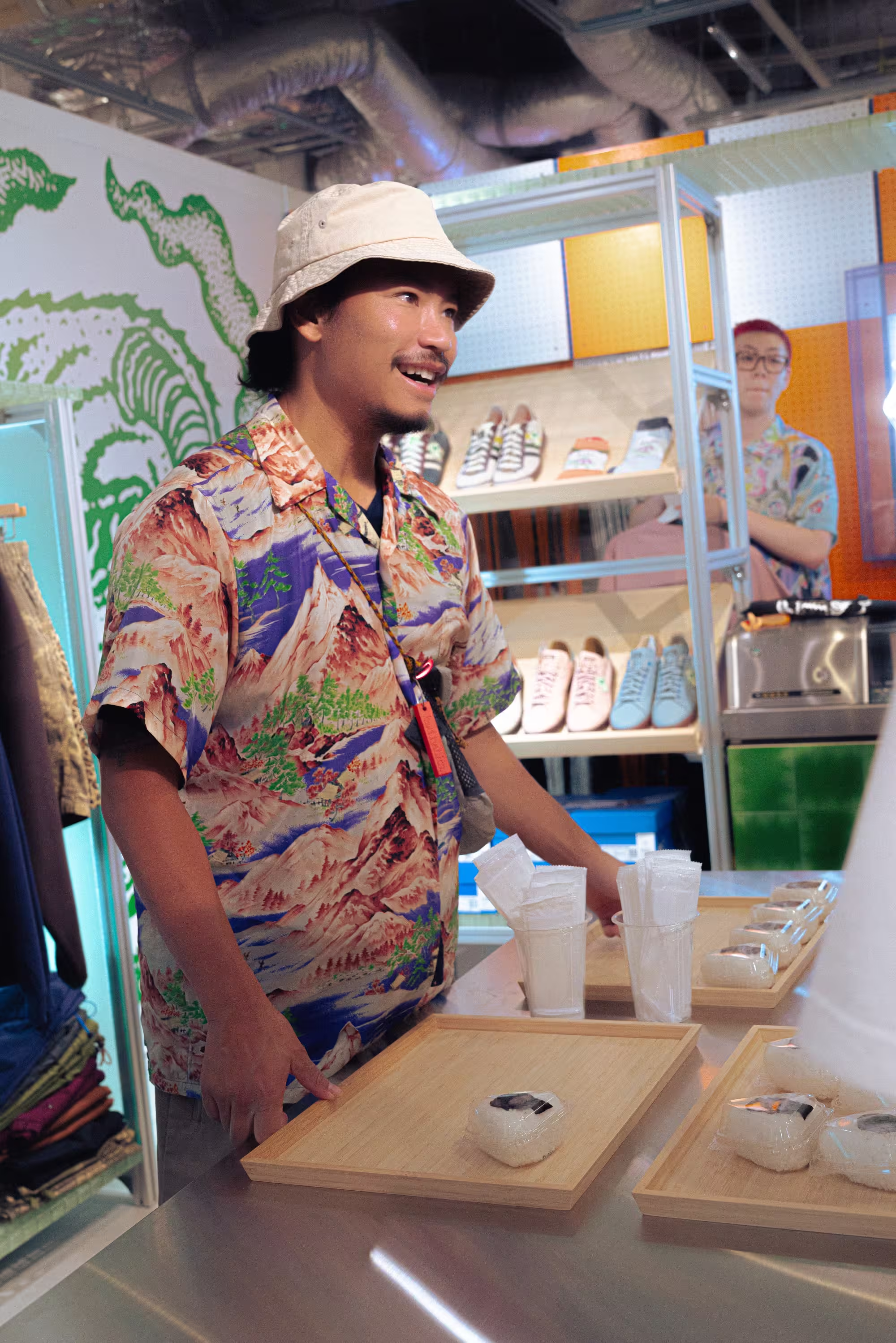 At the event, Kyle distributed rice balls with laver in the shape of the Brain Dead logo.
At the event, Kyle distributed rice balls with laver in the shape of the Brain Dead logo.
――Please let me know if you have any Japanese artists or cultures that have been particularly influenced by you.
Music from Tokyo, such as City Pop, has been greatly influenced by music from Tokyo, but it may be the aspects of art and design that have also been significant. For example, I really like the music of Shintaro Sakamoto and Cornelius and have a deep respect, but in particular, Sakamoto feels that he is a musician and an artist at the same time, and his attitude toward expression is very familiar to our activities. It fits perfectly with my own aesthetic sense and music hobby. He is confronted with sincere research on Japanese culture, and while being very impressed by his attitude, I think he resonates deeply with my production.
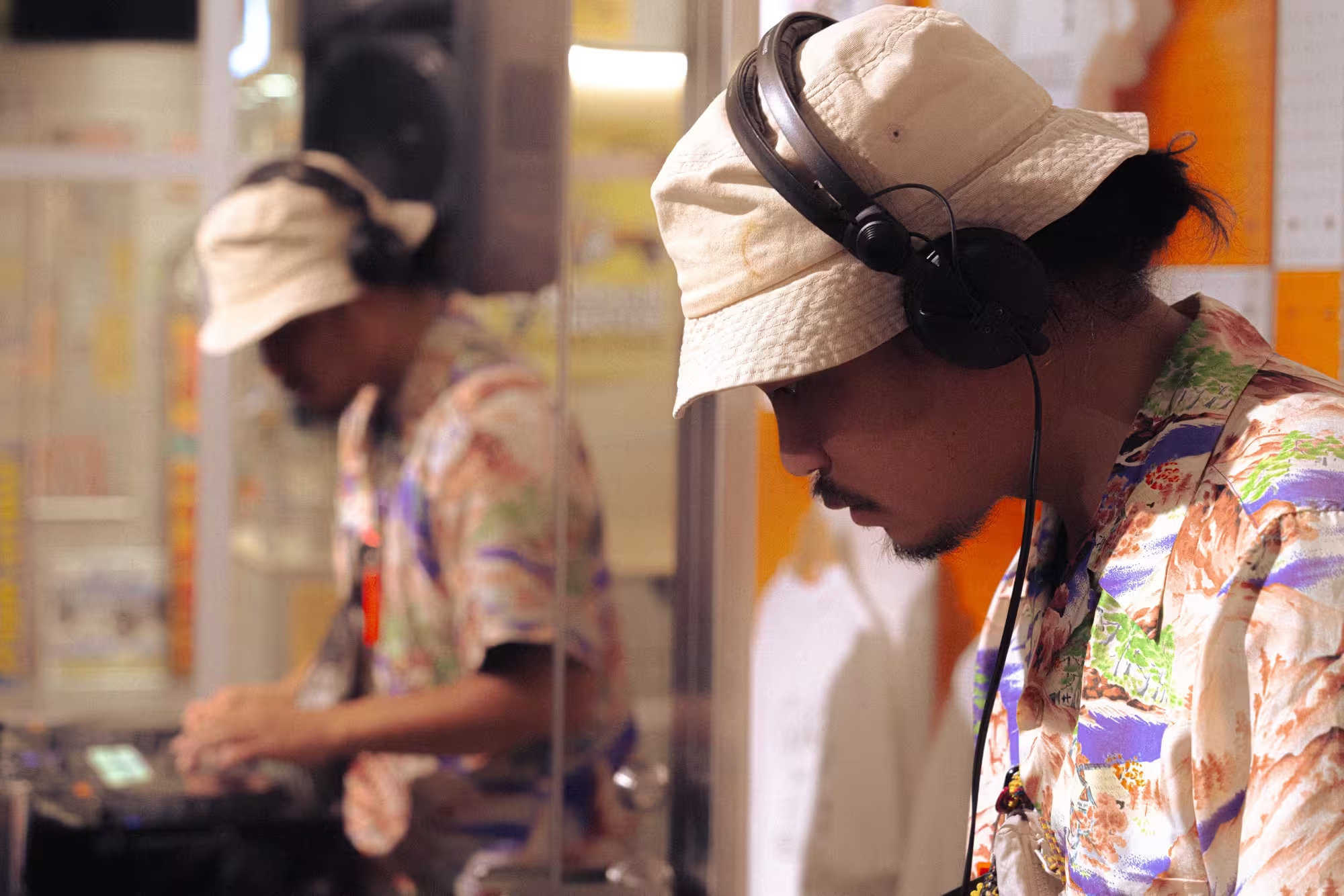
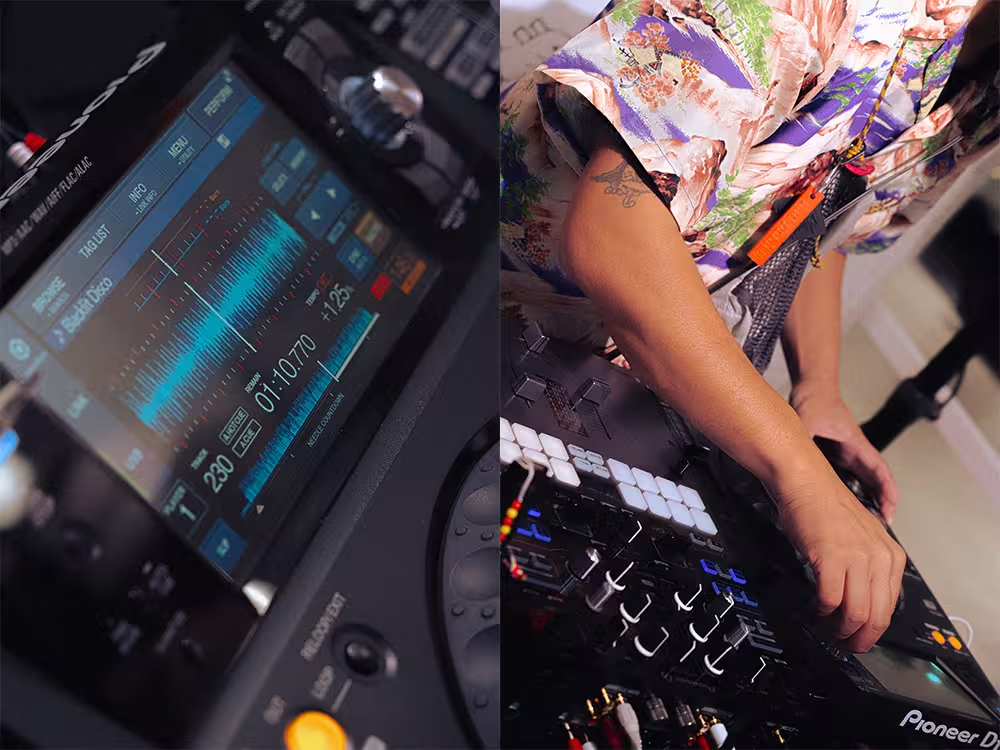 On the first day of CHAOS CULTURE GEEK, Kyle played DJ at the store. For bags and USB sticks
On the first day of CHAOS CULTURE GEEK, Kyle played DJ at the store. For bags and USB sticksThere was a lot of charms of characters like Kyle.
――While Shibuya PARCO is undergoing a major renewal from this spring, the 5th floor has been renewed to a floor like a secret base full of items that tickle the geek heart. The visuals produced in conjunction with the "CHAOS CULTURE GEEK" project on the theme of "playfulness" and "maniac" held in July were very impressive, combining them with chaos and geek sensibilities. First of all, what is “chaos” for Kyle?
Chaos for me is that there is no fixed path. Ideas and concepts are drifting freely, something is not going straight, and I don't know where to get. It is an unpredictable state that it is not clear whether or not there is a destination in the first place is the chaos for me. And in fact, I think myself as a pretty chaotic person (laughs).
But that doesn't mean something is broken or heading in the wrong direction, but rather it's the possibility that everything can always change and always be different. The idea that there is no right shape or rule from the beginning is the inspiration for my creation.
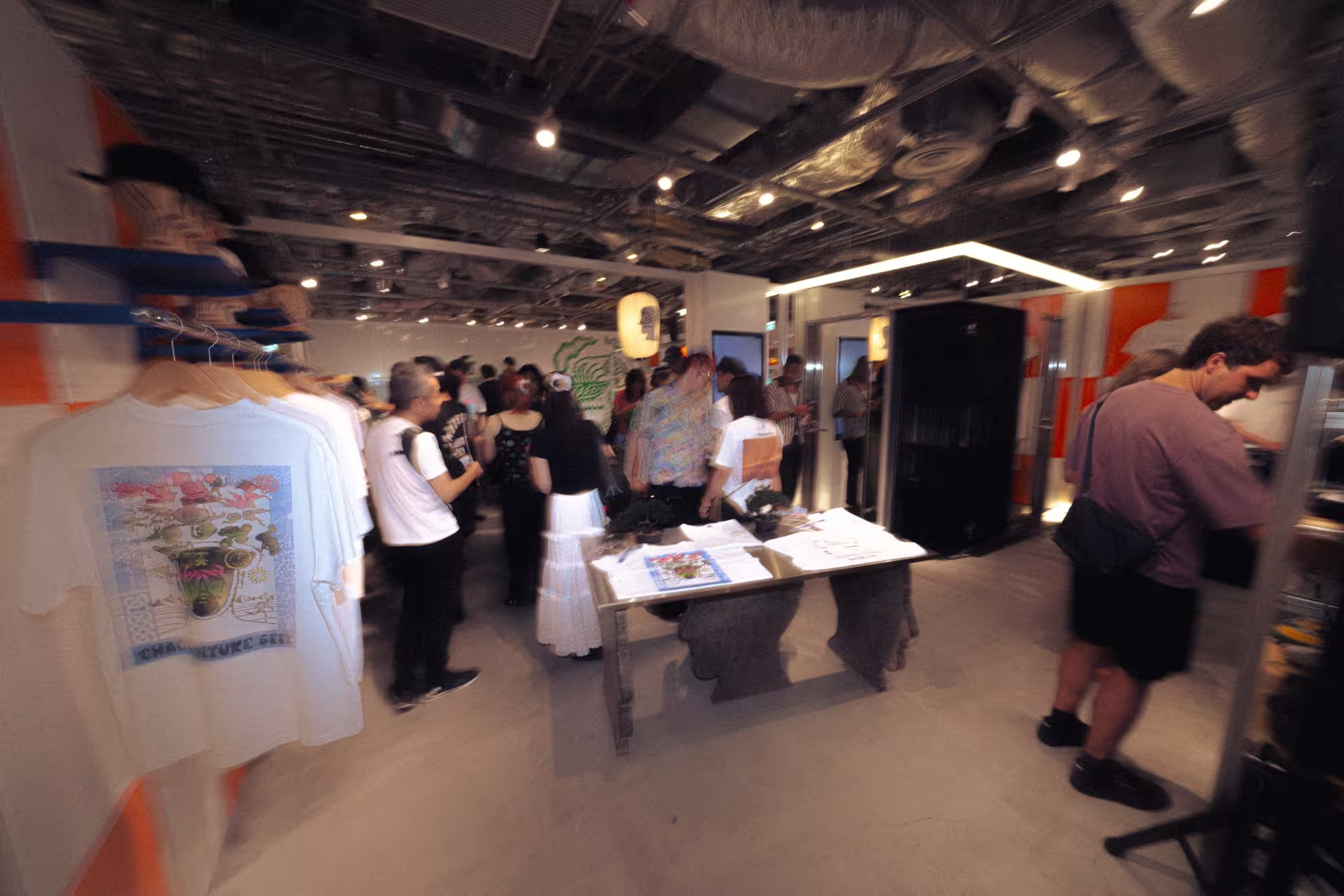
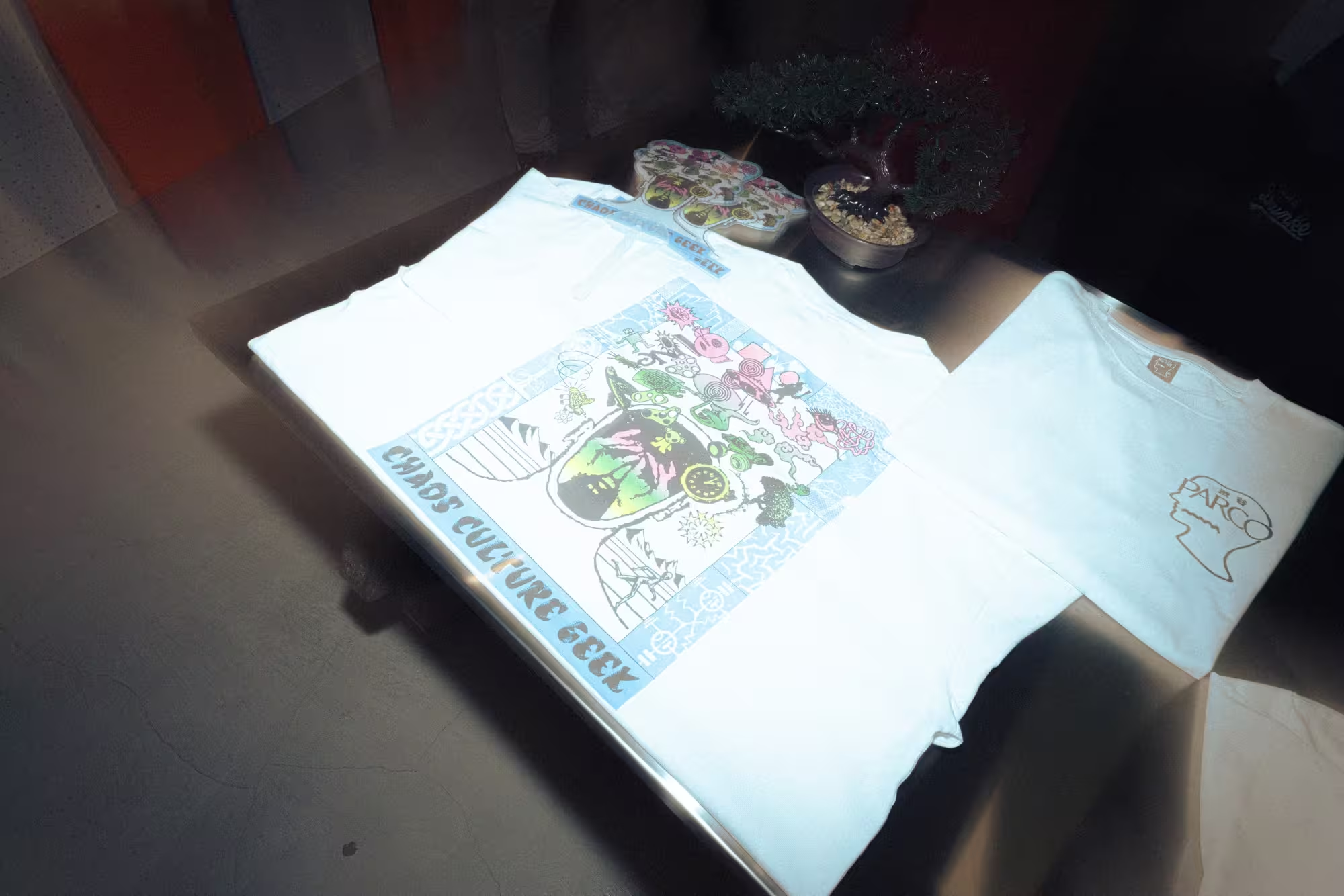 CHAOS CULTURE GEEK's original T-shirts are also available only for 100 pieces.
CHAOS CULTURE GEEK's original T-shirts are also available only for 100 pieces.The Brain Dead x Shibuya PARCO logo is on the front desk.
――Just as Shibuya PARCO has nurtured the community by bringing theatreality into cities, Brain Dead’s movement to create a creative place in the city can also be seen as the essence of the brand. Please let me know if you have any questions you would like to try in the future.
Because clothes are worn every day, their values, tastes, and backgrounds emerge. It's a fundamental "ground zero of expression" to talk about yourself. That's why I can expand my activities in multiple directions in a different way from other fields, and I feel infinite possibilities. Brain Dead’s audience is also very open to enjoying the activity itself, so I want to expand as much as possible.
Now we run a movie theater in Los Angeles, and that’s also a form of Brain Dead. By presenting the worldviews such as "Jetset Radio", "Saga", "Civil Engineer" and "Death Stranding" for each space, I would like to dig deeper into the value of the act of going to the cinema itself. That’s the next thing I think of Brain Dead. In other words, how do you create a place where you can experience it, not just a product? Designing the space itself that meets the unknown was my starting point, so I want to create not only the physical form of clothes, but also the world itself that spreads out from there.
Recently, I have the idea of making climbing gyms and escape games, and in the past, I have produced haunted houses. I think it's very important to have a space where you can enjoy such a play honestly. My current interest is in an experience where people can share places and events, not products, and I think there is a potential for our future expression.
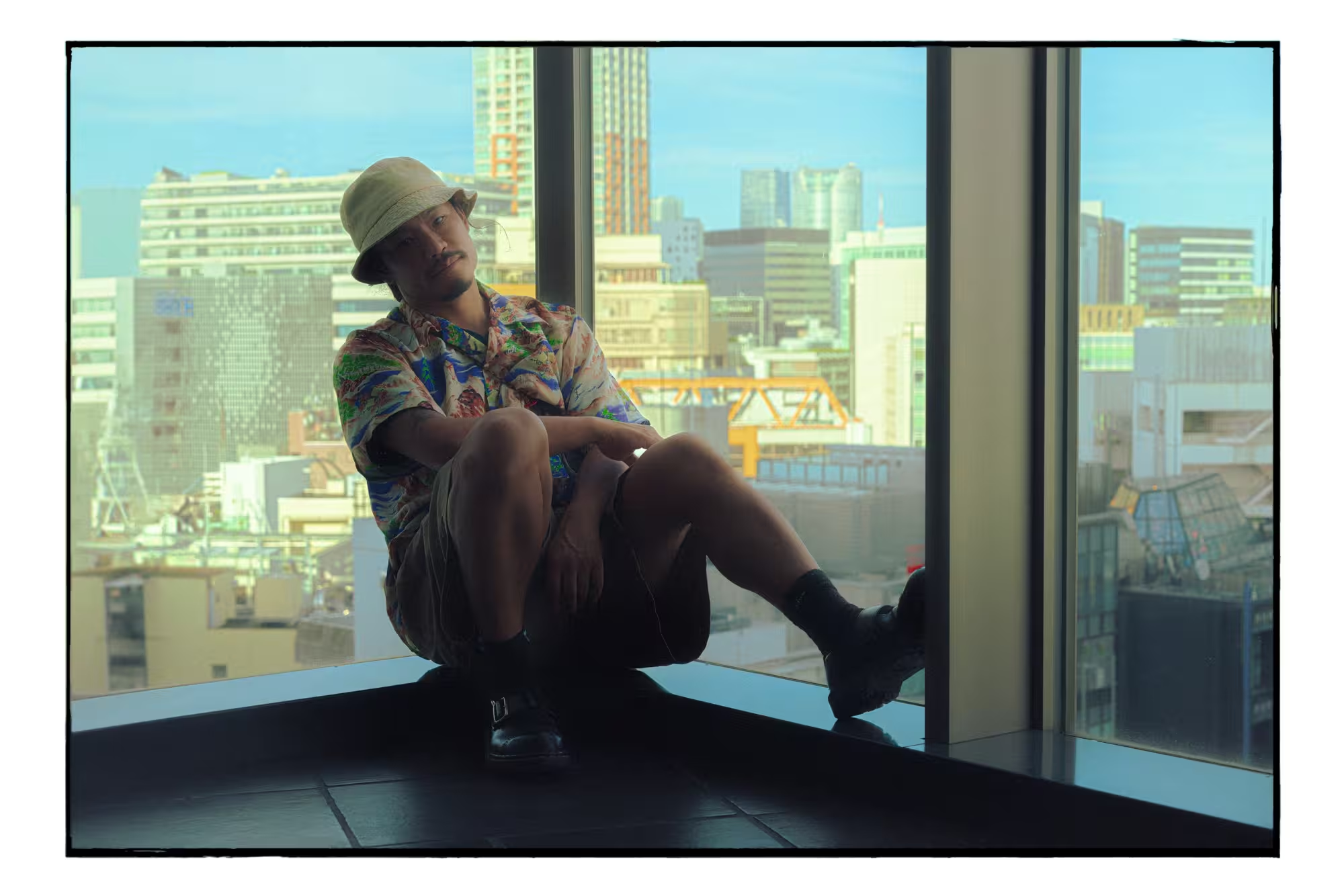
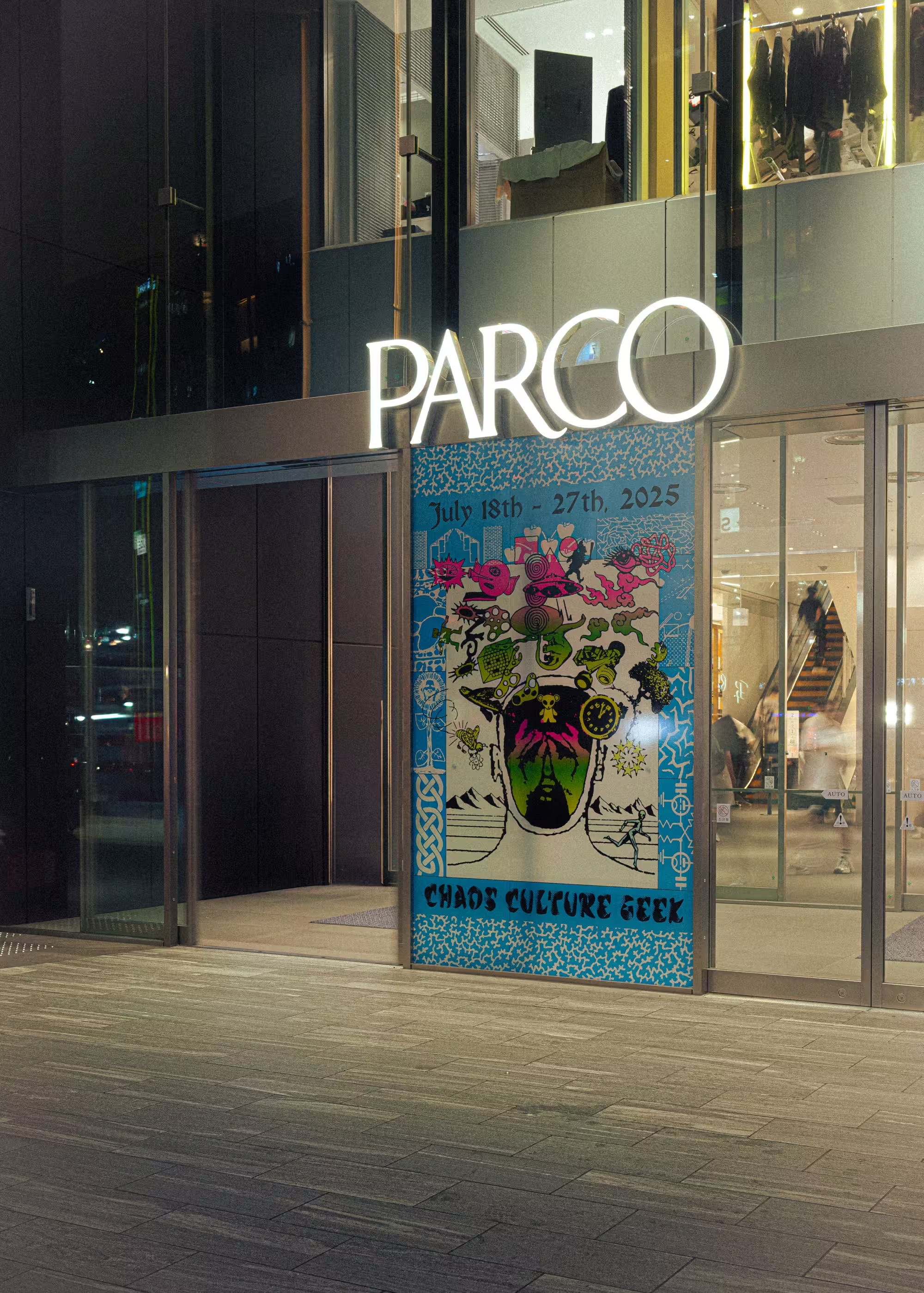

Kyle Ng (Kyle Un)
Founder and designer of Brain Dead in 2014. He expresses elements such as science fiction movies, comic books, and postpunk that he loves in various ways, such as clothes, furniture, shoes, and anime. One-of-a-kind graphics are highly popular all over the world, and have collaborated with many brands and companies.
Instagram(@farmtactics)(@wearebraindead)
